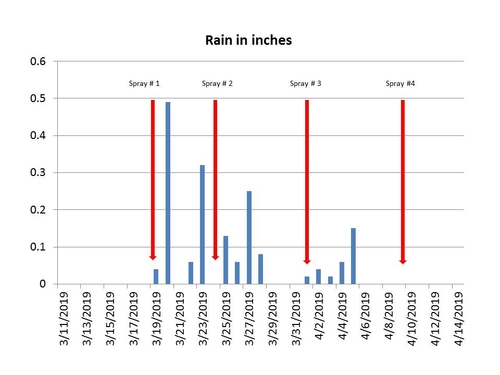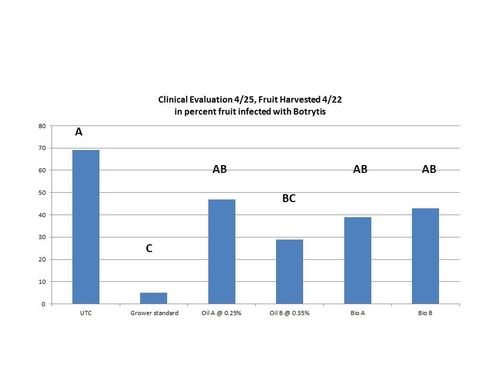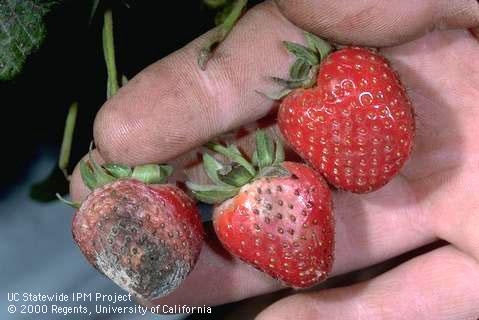Those of you familiar with my program of research and extension are aware of my rising interest in developing a protocol for consistent treatment separation in Botrytis gray mold fungicide work. More often that not in the years past, we ended up doing all of the spray and evaluation work just to end up with data with no significant differences, even between the untreated check and the grower standard. This is a widely known issue in the strawberry researcher community, but so far with little progress on ameliorating it, apparently.
I certainly haven't been idle in this quarter, and have tried larger plot sizes, longer intervals between fruit harvest and even last year putting misters in the plots to soak the flowers and fruit before sunset for the long period of free moisture necessary for development of this disease. All to no avail, and significant treatment differences were still elusive and rarely found.
On reviewing the literature this past winter, I did find that California Botrytis trials running early in the year, like in March and April, tended to pick up differences in treatment from time to time. That was the only signal I needed to arm up my spray gear and give it a shot.
As noted in a previous post, my colleagues at PSI and I initiated the first spray application on March 19 before a fairly decent rainstorm (1/2", that counts - CIMIS station # 111 is about 100' away, so it's an accurate number), and proceeded to do the same two more times ahead of subsequent rains and showers (see Slide 1 below,). The goal of course is to protect the developing fruit and critically the flowers for the periods of free moisture propitious for development of gray mold disease.
Harvest began two weeks ago, and along with picking marketable fruit, cull fruit and evaluating Botrytis in the field, the crew keeps a subset of the marketable fruit for me to take to the lab for clinical evaluation. The clinical evaluation is done as per the protocol developed by former UCCE plant pathologist Steven Koike, meaning holding the fruit at room temperature and looking for signs of Botrytis infection in the days that follow.
As you can see in slide 2 below, the clinical results are very, very solid. The untreated control is very much more infected than the grower standard ( 2 applications of Switch, followed by 2 applications of Captan) and the biologicals and a special type of oil are somewhere in between.
Very encouraging results here at the start of the work. I'll reach a bit and think we could be on our way to uncovering the path to a consistent screen of Botrytis fungicides in strawberry.
Attached Images:


